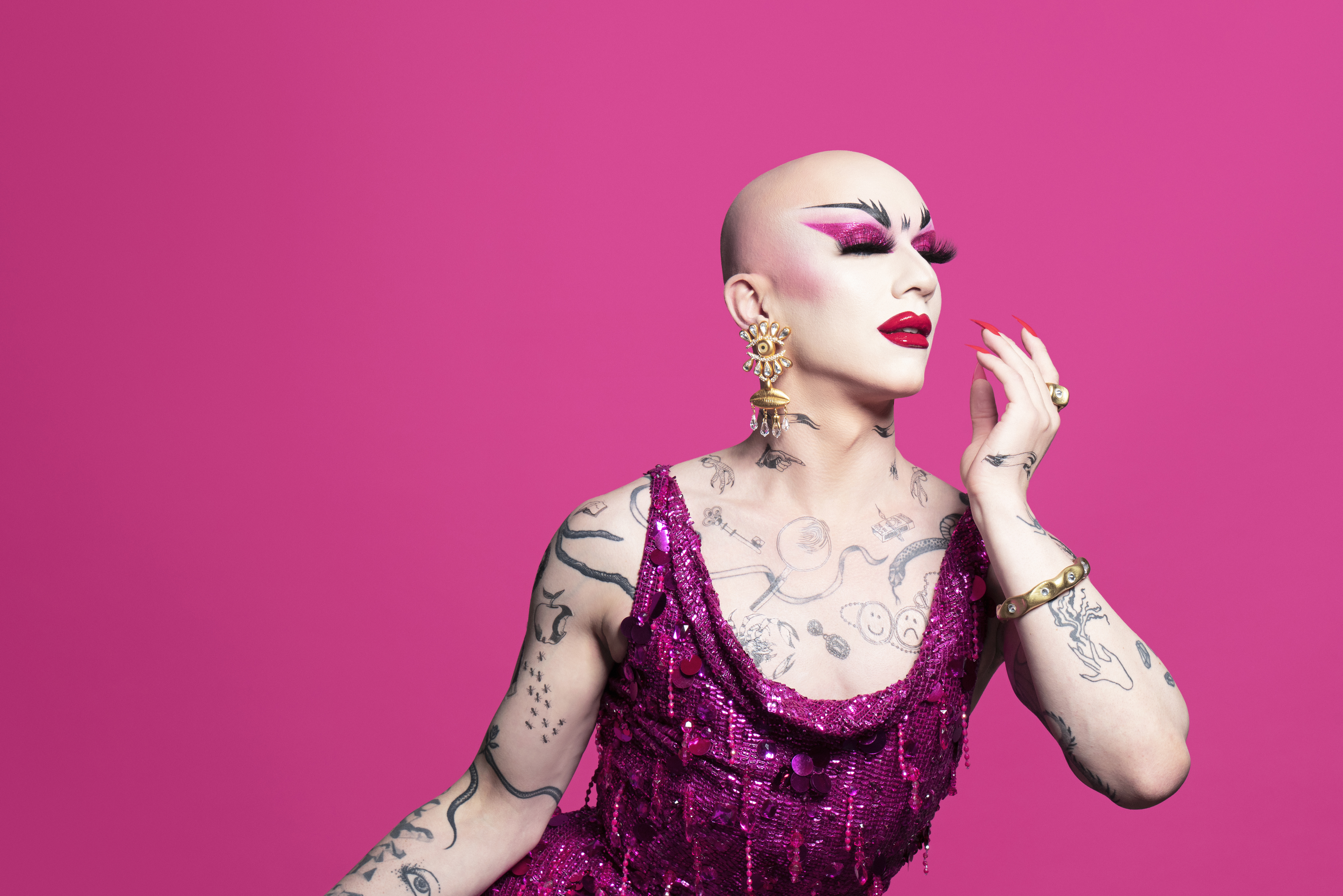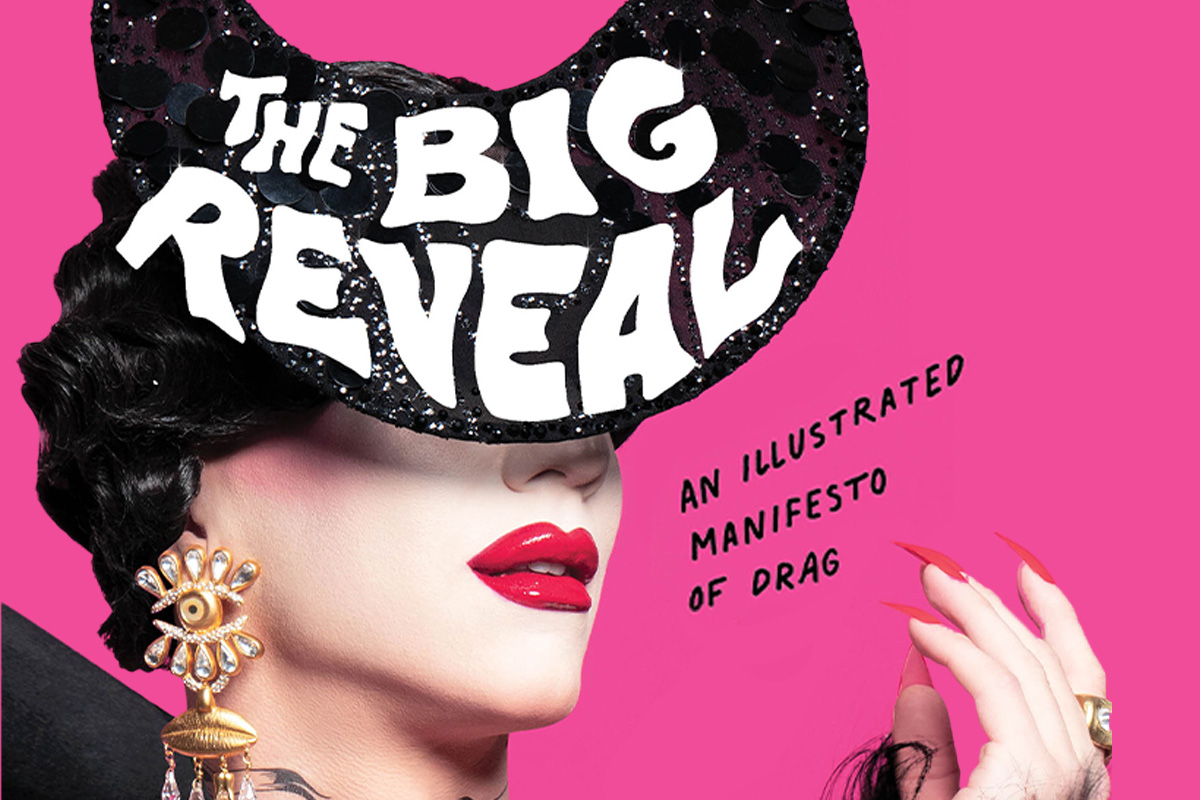In drag, a reveal can be everything. A luxurious gown can be torn away to unveil a snatched bodysuit; a long, voluminous wig can be thrown off to uncover a playful pixie cut. Done well, a reveal can seal a drag queen’s favor with the audience, eliciting tips, fandom or success in lip sync battle. Perhaps no one know this better than Sasha Velour. In 2017, the Jewish drag queen (quite literally) rose to fame for winning “RuPaul’s Drag Race” season nine with a finale lip sync to Whitney Houston’s “So Emotional” which involved shaking hundreds of rose petals from her wig.
Her latest reveal, however, is much, much bigger for Jewish fans.
In her recently released memoir, aptly titled, “The Big Reveal: An Illustrated Manifesto of Drag,” Velour intertwines the narrative of her life and career with that of drag history. By doing so, she teaches the reader about drag as transcultural practice, art form, revolutionary act and piece of queer identity, while also uncovering parts of the performer that they have never before shared with audiences — namely, the major role Jewishness plays in Sasha’s life.

The book is fresh, engaging and especially poignant at a time when both the queer and Jewish communities are facing outright demonization in society. So while I highly encourage you to read the book in its entirety, here’s everything Jewish about “The Big Reveal,” in no particular order:
1. Sasha’s Jewish grandmother Dina was the first person to put them in drag.
“When I visited her house as a little kid, she would always encourage me to channel my inner diva,” Sasha writes. “Beating out a drum rhythm on the arm of the couch, she would coach me to walk dramatically into the room, drop my coat, and reveal the look. ‘Fabulous!’ she’d whisper, knowingly.”
Dina Steinberg, of blessed memory, was born into an Ashkenazi Jewish family in Manchuria. (Her parents escaped pogroms in Ukraine and fled to China in the 1920s. Later, after the outbreak of World War II, they fled to San Francisco.) She passed away in 1997.
2. Sasha has always “been most fascinated by the Talmud.”
“According to Talmudic thought, in order to find the truth, we must be able to hold multiple possible meanings as true at the same time,” Sasha explains. She goes on, “That’s the kind of book I always liked best — a scrapbook that brought many things together in conversation.”
3. Her great grandmother Goldie was related to Sholem Aleichem, the Yiddish author best known for creating the character of Tevye the Milkman.
Sasha recounts that their father explained this to them (as well as other important aspects of Eastern European Jewishness) while watching “Fiddler on the Roof” for the first time. Naturally, Frumah Sarah was Sasha’s favorite character in the film. She writes: “Although I might have initially come to learn about my Jewish cultural history, I stayed for the witchy ghost getting her way vis-à-vis a necklace.”
Being a creative, theatrical child, Sasha would subsequently lip sync to “Fiddler” on cassette while perched on her father’s shoulders, pretending to be Frumah Sarah.
4. Sasha grew up in an interfaith household, and her parents let her choose which faith she wanted to follow.
Ultimately, Sasha chose Reform Judaism, as they were “drawn to the idea of eating ritual meals as a form of prayer.”
Same, Sasha, same.
They continue, “For years I studied Jewish history and Hebrew language after school and on the weekends. I was bar mitzvahed at thirteen and even taught Sunday school when I was in high school, reenacting Jewish fables with puppets that I made myself.”
5. Had Sasha been assigned female at birth, her name would have been Esther in honor of Queen Esther.
“Which was at least one reason I was very happy to have been born a ‘boy,'” they note.
6. Sasha’s out-of-drag last name, Steinberg, was chosen by their great-great-grandfather.
In the “Key” section of the book, Sasha explains that when their great-great-grandfather emigrated to New York in the 1890s, he changed his original, now-unknown last name to Steinberg at Ellis Island. He did this apparently after seeing a warehouse marked “Steinberg & Sons,” considered it to be a Jewish name that marked wealth and took it on.
7. Her great-grandmother Goldie Rabinovich worked at the Triangle Shirtwaist Factory, and survived the fire because she was late to work on March 25, 1911.
“In America, Goldie walked to work from her tenement on Poyl Street (that’s how she pronounced ‘Pearl’) every day to the Triangle Shirtwaist Factory in Greenwich Village, where she produced hundreds of shirtwaists a day,” writes Sasha. “Sometimes Goldie lost track of time window-shopping on her walk, entranced by sharply-dressed mannequins and elaborate displays of feathered hats and jewels. If she arrived late to the top floor of the factory, she would usually find the steel door to the factory floor locked, so the women inside couldn’t take breaks. She had to bang on it, hoping someone would hear her over the machines and let her in.”
On the day of the fire, Goldie fatefully couldn’t get anyone to unlock the door and returned back downtown to safety. Though Sasha explains that her great-grandmother was slightly embarrassed by her association with the fire, her aunt Deborah tells the story with a quintessentially Ashkenazi twist.
“‘No! No! No! [Goldie] was late because she stopped to buy a dill pickle in Cooper Square. This is a story about snacks!'” Sasha quotes Deborah.
God, I hope that’s true.
Important, too, is the moral that Dina, Goldie’s daughter, would glean from the story and relay to Sasha: “Remember Grandma Goldie’s lesson… window-shopping can save your life!”



